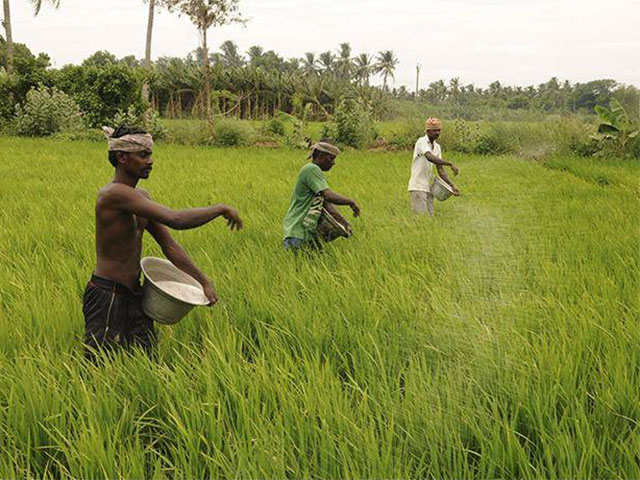Since the implementation of the “One Nation, One Fertiliser” Policy in January 2023, the government has reportedly saved approximately Rs 2,500 crore in fertiliser subsidies by reducing transportation costs for soil nutrients. It is expected that the savings for the entire year will exceed Rs 5,000 crore. Read More Business News on our website.

Bharat Brand Fertilisers Susbsidy Helping Agriculture Sector
According to official sources, after assigning specific fertiliser units to cater to farmers’ soil nutrient requirements in their respective regions, the subsidy for transporting fertilisers has significantly decreased. Previously, companies had the freedom to sell their soil nutrient products anywhere in the country, resulting in substantial transportation costs. However, under the new policy, fertilisers are sold under a unified “Bharat” brand within the geographical locations of the 177 manufacturing units, leading to a significant reduction in cross-country movement of soil nutrients. This approach has also resolved the farmers’ dilemma of choosing from numerous fertiliser brands available in the market.
The objective of this measure is to standardise fertiliser brands across the country, regardless of the manufacturing company. In August of the previous year, the government introduced the ONOF policy, which included a single brand name for urea and other fertilisers. Since January 1, 2023, all fertiliser bags feature a common logo indicating the fertiliser subsidy scheme called “Pradhanmantri Bhartiya Janurvarak Pariyojna.”
Companies, state trading entities, and marketing companies currently sell fertilisers such as urea, di-ammonium phosphate (DAP), muriate of potassium (MOP), and nitrogen, phosphorus, and potassium (NPK) under the brand names Bharat urea, Bharat DAP, Bharat MOP, and Bharat NPK. The entire burden of subsidizing the sale of fertilisers below cost is borne by the government. With the new policy, fertiliser sales are no longer tied to specific branding, as stated by an official from a fertiliser company.
The fertiliser subsidy reached a record high of 2.54 trillion in fiscal year 2023, primarily due to the surge in global commodity prices. This marked the third consecutive year that the subsidy for soil nutrients exceeded 1 trillion.
Since March 2018, the retail price of urea has remained unchanged. Under the scheme, farmers can purchase this key soil nutrient at a fixed price of 242 rupees per 45 kg bag, despite the current production cost being around 2,200 rupees per bag.
The government annually announces subsidy rates based on nutrients for phosphatic and potassic fertilisers for both the kharif and rabi seasons. In terms of volume, imports make up approximately one-third of the total domestic consumption of soil nutrients, which stands at around 65 million tonnes per year.
The government provides the fertiliser subsidy directly to manufacturers, who sell their products to farmers through their retail chains. Since October 2016, subsidies have been disbursed to farmers using point-of-sale (PoS) devices installed at outlets. Starting from March 2018, beneficiaries have been identified using their Aadhaar number, Kisan Credit Card, and other relevant documents.
